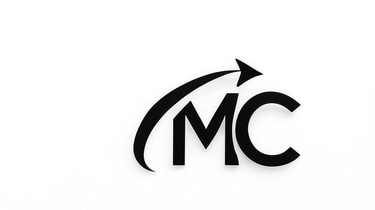The Use of Big Data in the Brexit and 2017 French Elections
Can Data Win the Elections?
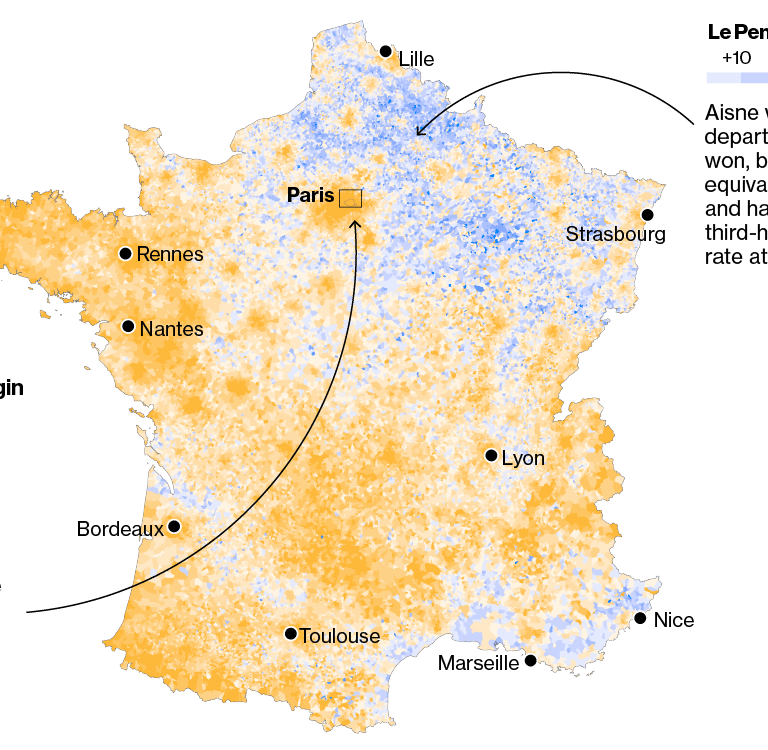

Editor Note: This article was written in 2022 and remains unchanged; events and developments after this date are not reflected.*
BIG DATA
Big data is a meaningful and actionable form of data obtained from observations, research, search engines, blogs, forums, social media and many other sources. The method used to compare the data obtained allows us to examine the relationships between these data and to highlight the links between them. Thus, institutions, businesses and even candidates conducting electoral campaigns that benefit from the data sets have more information on the profile of the target audience. As data and information on public behaviour and potential responses increase, the campaign is re-organized accordingly. Facebook, Twitter, YouTube Instagram, marketing, e-mail, blog, social media our friends like, YouTube video views are the nodes of this network through Unique Website visitors-Google Trend.
Almost, everyone encounters a similar warning when they log into a website, blog, news application, or social media account, “we value your privacy”, “we use cookies to improve your personal experience”, “we would like permission to share your personal data with our ad partners to allow them to show ads tailored to your interests”. As a result of this request, which we must accept before continuing to the site, we allow some of the data that creates the big data to circulate in the virtual environment at our own will. The use of Bigdata in companies and advertising companies is mostly on the websites we browse and our reactions to advertisements. However, companies are not the only legal entities that benefit from Bigdata. Candidates competing for elections also benefit from these data sets. Considering that the average of internet access per household and per capita is at the highest level in history, it is vital for candidates to access and benefit from big data in their election campaigns to win their election campaigns.[1]
Influence of Big Data over elections
Foreseeable Future. Candidates running the campaign and their teams want to record which citizens support specific campaign-supporting actions, like donating money, volunteering, attending rallies, or expressing support for candidates or issues in tracking polls.[2] Thus, the campaign can manipulate the election zone. The question to be asked after this stage is how the Campaigns access this data. Before the widespread use of the Internet, data collected for election were collected by canvassing, phone calls by volunteers, surveys door door and fundraising methods. Today, voter data modelling is done by compiling social media comments, campaign website clicks, donations, e-mail subscriptions, and even the conditions for purchasing campaign items. Obama's 2012 campaign contains many important anecdotes in terms of the use of Bigdata in the elections. As can be seen in the Table below, a way was followed to collect donations for the voters with 4 different variations and to sell the items with their slogans on.
As can be seen from the Table, the variant in which the voters will be given t-shirts if they donate $30 or more was preferred more than the other options. This method, known as question assumption, is based on the scope of delivering the same product or message to users in different ways. The Brexit supporters' website, Leave.EU, also used a similar method.[3] What the data sets are and how they are obtained is briefly explained above. In the next stage, the details of this modeling, which brought victory to pro-Brexit and the Macron supporters in the Brexit and 2017 French elections, will be explained.
Brexit, Background and social media
Nearly two decades have passed since Margaret Thatcher's words no to further integration with the EU. When the referendum decision was taken, some of the conservatives and more than a third of the people in England were advocating the reclaiming of the EU's regulatory directives and its powers over the judiciary by the Country's authorities. In the referendum held under the refugee crisis, Islamophobia, ISIS terrorist organization actions and the rise of right-wing populism in 2016, pro-Brexit supporters won with 51, 89%.
According to the Financial Times, two weeks before the referendum, pro-Union votes were 48%, while supporters of secession had around 46%.[4]
When the first results came in about two weeks later, the reliability of the survey companies failed another test. After this defeat of the survey companies, public interest and debates increased regarding the role of bigdata/social media, the hidden power of the elections. Despite the high percentage of voters who want to stay in the EU in the polls, the leading explanations for why the separatists won were Range of Big Promises and Clear Narrative. However, in order for this narrative to reach the audience, there was also the effect of the voter modelling system, which was compiled by tens of people working in the background by bringing together millions of data.
Facebooks’ Role
With over two billion people on the site, including 40 to 50 million monthly UK users, Facebook is the world’s largest social network.[5] A man named Kosinski, who did PHD at Cambridge University in 2008, developed a method called Behavioral Mapping techniques, which succeeds in making personality analyzes by looking at people's Facebook likes. For example, Kosinski, who ran the Brexit and Trump campaign, could prove a user's skin color (95% accuracy share) and the political party they supported -in the USA- (85%) by looking at 68 Facebook likes.[6] Performing user analysis from Facebook likes has become important for the future of elections. Nigel Farage’s party-BREXIT PARTY-accounted for 51% of all shared content on Facebook and Twitter during the campaign, despite only producing 13% of the content. The analysis, by the 89up digital agency, said the “scale of their success went beyond what we were expecting”.[8] The analysis looked at each party’s impact on Facebook and Twitter, their top-performing content, and the impact of their party leaders. The analysis found the Brexit party generated more than 45 times as many shares through “simpler, stronger messaging and a deeper understanding of their audience”. The campaign was “overwhelmingly negative”, focused 39% of all ads on attacking Labour and prioritised older Facebook users in England rather than 18-24-year-olds, or residents of Scotland and Northern Ireland. The accounts were all created relatively recently, had Brexit party profile pictures, tweeted dozens to hundreds of times a day, and posted almost exclusively about Brexit. For instance, from posts made between 5 April and the election, The Brexit party made 212 to Change UK’s 62 posts. It received 325,900 shares, compared to Change UK’s 7,200 shares.[9]
Change UK’s messaging was criticised as complex, suggesting that a vote for them would lead to a second referendum, which would in turn allow the British public to have a final say. The voters are busy, so the content, surveys, interviews and even social media messages such as facebook and twitter should be kept as short as possible and read. The Brexit party’s posts were more direct and emotionally charged, compelling followers to “save democracy, support Brexit”, or help Britain avoid humiliation. The Brexit party’s Facebook posts were an average of 19 words long. Change UK’s were 71 – more than three times longer. Leave.EU has over 50% more Facebook likes than People’s Vote UK. However, according to Analytics, a tool from social media monitoring firm News Whip, the average post by Leave.EU during the period examined received ten times (1000%) the interactions that People’s Vote UK gained.[10]
Twitter and Leave. EU and Websites
After dedicated news sites, social media is the second most important place people discover news online (Newman et al 2016) Twitter is also particularly popular among politicians. 87 per cent of British MPs have Twitter accounts. Max Hänska and Stefan Bauchowitz analyzed nearly 7.5 million Brexit tweets and shared data on the effectiveness of the social media platform in the referendum.[11] In the research findings, they used criteria such as tweets and replies sent, quoted, the websites they shared, the effectiveness of the hashtags campaigns they participated in. In addition, they developed an approach to the campaign effects of the parties from the most shared and watched YouTube campaign videos. While the supporters of the EU were more active in total YouTube views, the pro-Brexit supporters on Facebook and Twitter did a more effective job than the supporters of the union in terms of the accounts they opened, the number of political posts they sent and the number of comments they received. Twitter may be that slogans such as ‘vote Leave’, ‘take control’, or even ‘Brexit’ were more suited to simple, soundbite messaging than the Remain campaign’s slogans and arguments (which is particularly useful given the character constraints of a tweet).[12] Press coverage of the Referendum also favoured leaving the EU. Weighted for circulation, 82 per cent of newspaper articles in the lead-up to the Referendum supported leaving the EU. (Deacon 2016) The size of the different pages is also important. There is a significant gap between Leave.EU, which boasts 993,800 likes, and big pro-Remain pages like People’s Vote UK, which lags behind at 607,800.
If we look at the graph below, we can get a specific impression of the way campaigns are run. For example, accounts linked to Leave.EU and Brexit Party preferred to use more angry, negative content and a language that accuses EU supporters of elitism.
Leave.EU used images more regularly than other Brexit-related campaign pages over the period, and more than other types of post. Many of the posts are essentially memes: images, often in striking colours, with text written over them. Leave.EU’s preference for photos also enables the page to fire out several original posts each day; posting an average of 7.4 times a day compared to People’s Vote UK’s 3.6. This allows Leave.EU to flood users with a steady stream of cheap, shareable, hyperpartisan, and attention-grabbing information. The other side of the campaign is the refugee crisis, economic independence and disinformation that the countries that will join the union will destabilize the UK, which has been repeated many times from various sources, especially from official accounts.
Although Turkey's membership process was suspended due to autocratization and joining the union in the short and medium term was not possible, pro-Brexit supporters claimed that with Turkey's membership, the transition to British citizenship would increase. By keeping the claims that this situation will trigger economic stability in England on the agenda, they mobilized the feelings of anger and fear.
Instead of Conclusion
In 2016, a critical referendum was held in England that would set the country's trajectory for the new century. There were 2 points that made the referendum special. The first of these was that the survey companies were wrong in the results, and the second was the decisiveness of the role of Bigdata and social media. The success of Cambridge Analytica, which also works for the American President Trump, in collecting data from Facebook, Twitter, website and other news sites and creating messages about the collected data, has been a guide for future elections. The success of a well-organized campaign, including bot accounts, memes aimed at young voters, use of emojis, repetitive lies, posts based on audience characteristics, and repeated disinformation through official channels, was remarkable. The success of Bigdata in the elections not only affected England, but also entered the agenda of another European country, France.
France Elections and Big Data
MACRON
Macron's campaign is unique in that it is the fastest organized organization in French history, demonstrating the remarkable role of volunteers in data collection. The reasons behind the fact that a liberal banker gets votes from all components of the political spectrum, starting from the left electorate, are instructive in terms of whether the same method will be used again, especially before the presidential elections to be held next April.
A Brief Background of the Elections
After Trump's victory in America, and after the Brexit supporters won the referendum in the United Kingdom with the help of the Trump team, all eyes were turned to the French elections, which were entered under the extremist right, terrorism, and populism rising in Europe. Le Pen's anti-European and anti-globalist statements made Macron a candidate who could work in harmony with the market economy due to his liberal and Globalist background. Although Fillon's involvement in corruption scandals involving his wife and children in the socialist party put Macron in a position to get votes against Le Pen from the left voters, there were some obstacles in front of him. The movement was unrecognizable.
The fact that Macron was the economy minister was known to the market associates, but Le march, which he founded among the people, and himself needed to reach the masses. Guillaume Liegey, a 36-year-old Harvard graduate and ex-McKinsey consultant, is the ‘L’ of LMP, which models both local and national political campaigns along the lines of technology start-ups. From Berlin, where LMP is opening a new office, he declares, “Maybe I’m biased, but I think what Macron has done has never been done before… he has made politics exciting again because he has shown how somebody who has not been a longterm political insider can build a powerful movement.” [13]
Although these sentences were a tribute to Macron's success, the background of the elections was not so romanticized. Liegey was recruited as an assistant to Macron's campaign, which witnessed the success of Obama's success in reaching voter profiles with the bigdata he used especially in his second election campaign and in executing policies towards this. He met MIT economics graduate Vincent Pons and fellow McKinseyite and Harvard graduate Arthur Muller. All three were galvanised by the way the vast technological and scientific infrastructure of Obama’s campaign had been deployed to reinvent the seemingly old-fashioned technique of going from door to door to talk directly to voters. Le Monde recently dubbed them, “Three men and a software program.”[14] Although Liegey referred to the role of technology and the importance of data collection, he complained about the uselessness of technological datasets without the old-fashioned methods, saying Technology allows you to work in a wide range, but human interaction gets you votes.
Data collecting
Liegel and his team prepared 8 key questions to explore how people will form deep bonds with a new political leader from the ground up. The questions focused on what worked and what didn't work in France, what people remember about the past year, their worries about the coming years, and entrepreneurial ideas about people's immediate environment.
“By the end of July,” Liegey asserts, “they had knocked on 300,000 doors and had conducted 25,000 in-depth conversations. “So, we had around 1.5 million words to analyse, which is more than Tolstoy’s War and Peace [about three times more to be precise], but still human-scale.” [15]
In response to a question about why they did this, he gave Obama's 2012 election campaign as an example, but said that he was convinced that it was appropriate to continue with this method because the Landscape was different between America and Europe. Thus, the data collected as a result of the survey were entered into a central system and voter profiles were created. Macron and 200 thousand people who organized in a short time communicated with millions of people and implemented the largest voter modeling system in the history of France. There are about 15 million Facebook and Twitter users in France. Macron also kept his press interviews and public talks short, preferring a campaign where social media is at the forefront.[16] Although Brexit sets a different example in terms of social media sharing, the use of bot accounts, and disinformation, Macron's combination of the old method door to door and software used in his campaign and achieving this with the voluntary participation of the masses is a unique example of the use of community-supported big data.
Hack and Cyber Security
An important part of the Macron Election campaign was built on hack attacks and cyber security. Some leaked e-mails in England proved that Cambridge Analytic was involved in the beginning of Brexit and revealed some irregularities in campaign funding. In France, there was a big hacking crisis in the last week of the elections. Although this crisis, which is also on the agenda as #MacronLeaks, created an advantage in favor of Macron, he and his Movement condemned the attack. It has not been clarified by whom the attack was carried out. Dispute this coming within 48 hours before the beginning of the vote and with Macron increased by 20 percentage points in the latest polls.[17] Hence, it can be said that although Bigdata allows data collection on a central server, it is vulnerable to piracy attacks. French Macron and his team built the campaign on not only collecting data, but also ensuring the reliability of this data, by taking the highest precautions in the field of cyber security. Thus, despite the wind being on Le Pen's side, a political movement founded from scratch achieved all these and signed a first in the history of France
Bibliography
1 Nickerson, David W., and Todd Rogers. "Political Campaigns and Big Data." HKS Faculty Research Working Paper Series RWP13-045, Revised February 2014.
2 Hänska, Max & Bauchowitz, Stefan. (2017). Tweeting for Brexit: how social media influenced the referendum.
3 How Leave.EU dominates the Brexit conversation on Facebook https://firstdraftnews.org/articles/how-leave-eu-dominates-the-brexit-conversation-on-facebook/
4 Internet usage worldwide https://www.statista.com/topics/1145/internet-usage-worldwide/#dossierKeyfigures
5 Leave. EU https://leaveeuofficial.com/
6 Something ‘sacred’: Has Macron created a new political media strategy?https://blogs.lse.ac.uk/polis/2017/12/12/something-sacred-has-macron-created-a-new-political-media-strategy/
7 #MacronLeaks changed political campaigning. Why Macron succeeded https://www.weforum.org/agenda/2017/05/macronleaks-have-changed-political-campaigning-why-macron-succeeded-and-clinton-failed/
8 We used big data to predict Macron would win. Here is what we learned in the process https://www.echobox.com/resources/blog/we-used-big-data-to-predict-macron-would-win-here-is-what-we-learned-in-the-process/
9 The French Election Tracker https://showcase.echobox.com/frenchelection/?utm_campaign=big%20data%20Macron&utm_source=resources&utm_medium=blog
10 The Big Data calls for an unexpected winner of the first round https://medium.com/the-french-report/the-big-data-calls-for-an-unexpected-winner-of-the-first-round-6494ad93422a
11 Brexit: The Uncivil War showed us how the EU Referendum was won with Data Science https://towardsdatascience.com/brexit-the-uncivil-war-showed-us-how-the-eu-referendum-was-won-with-data-science-3d727ee03fc0
12 How Social Media and Big Data Shaped the Brexit Campaign Strategy https://www.process.st/brexit-campaign-strategy/
13 Three men + a software = the Elysée? https://www.lemonde.fr/m-moyen-format/article/2017/04/07/trois-hommes-un-logiciel-l-elysee_5107263_4497271.html
14 How big data helped secure Emmanuel Macron’s astounding victory https://www.prospectmagazine.co.uk/politics/the-data-team-behind-macrons-astounding-victory
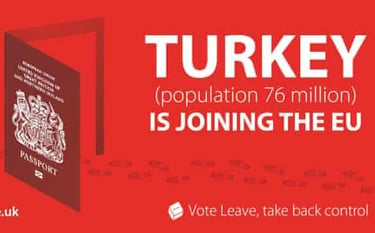

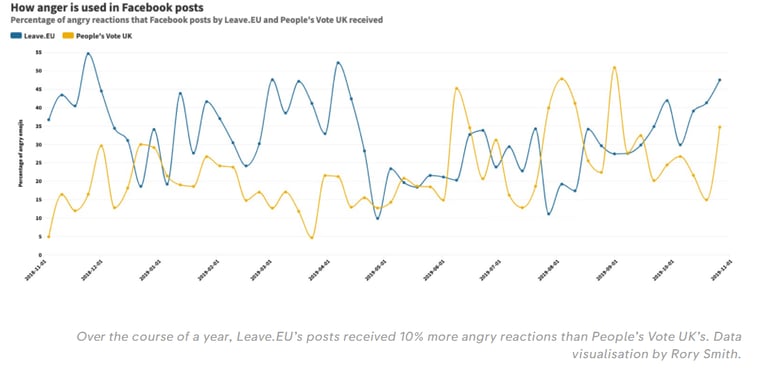

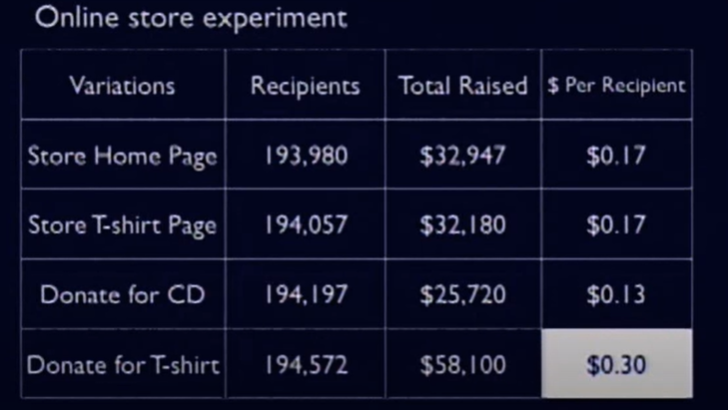

Macron's campaign is unique in that it is the fastest organized organization in French history, demonstrating the remarkable role of volunteers in data collection.
The Use of Big Data in the Brexit and 2017 French Elections
Influence of Big Data over elections
